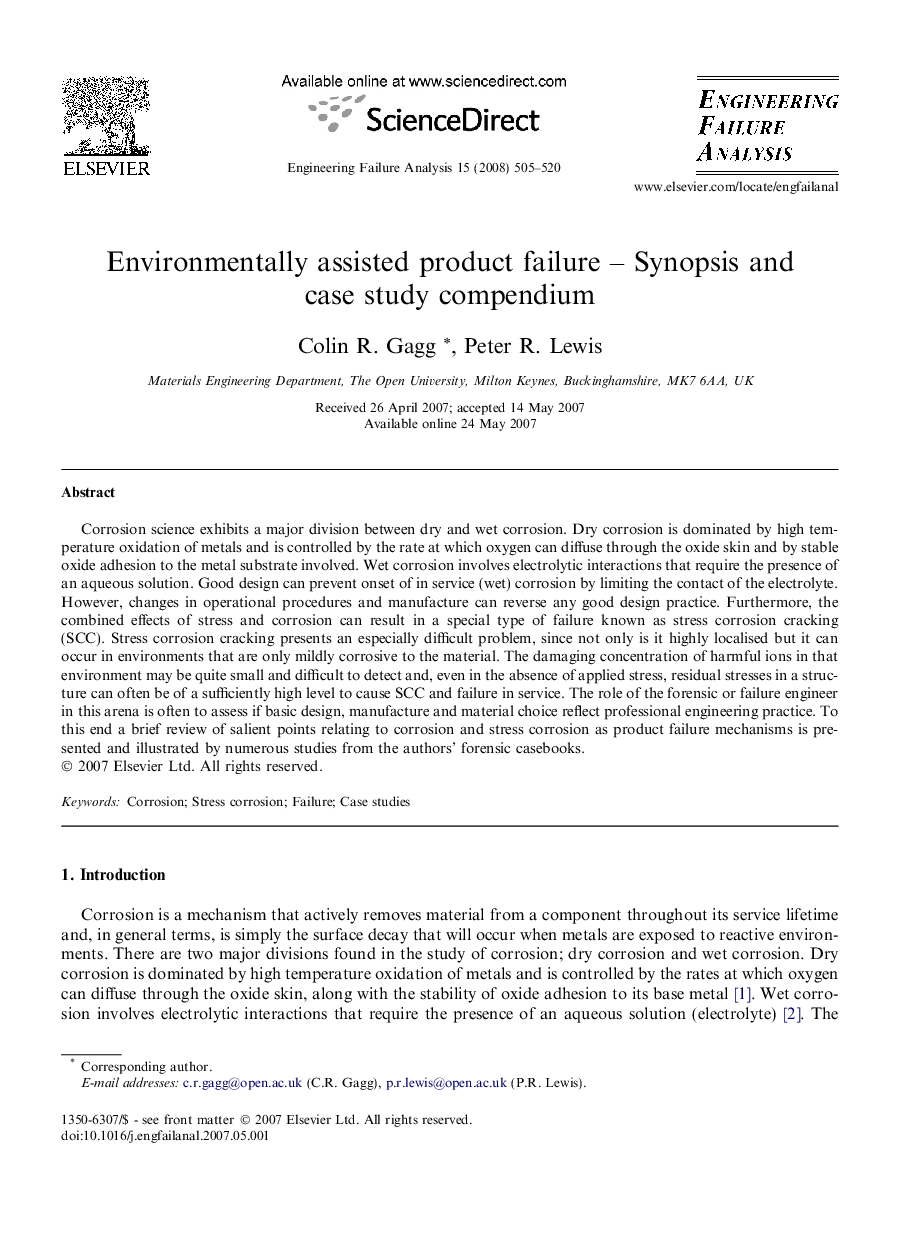| Article ID | Journal | Published Year | Pages | File Type |
|---|---|---|---|---|
| 769219 | Engineering Failure Analysis | 2008 | 16 Pages |
Corrosion science exhibits a major division between dry and wet corrosion. Dry corrosion is dominated by high temperature oxidation of metals and is controlled by the rate at which oxygen can diffuse through the oxide skin and by stable oxide adhesion to the metal substrate involved. Wet corrosion involves electrolytic interactions that require the presence of an aqueous solution. Good design can prevent onset of in service (wet) corrosion by limiting the contact of the electrolyte. However, changes in operational procedures and manufacture can reverse any good design practice. Furthermore, the combined effects of stress and corrosion can result in a special type of failure known as stress corrosion cracking (SCC). Stress corrosion cracking presents an especially difficult problem, since not only is it highly localised but it can occur in environments that are only mildly corrosive to the material. The damaging concentration of harmful ions in that environment may be quite small and difficult to detect and, even in the absence of applied stress, residual stresses in a structure can often be of a sufficiently high level to cause SCC and failure in service. The role of the forensic or failure engineer in this arena is often to assess if basic design, manufacture and material choice reflect professional engineering practice. To this end a brief review of salient points relating to corrosion and stress corrosion as product failure mechanisms is presented and illustrated by numerous studies from the authors’ forensic casebooks.
